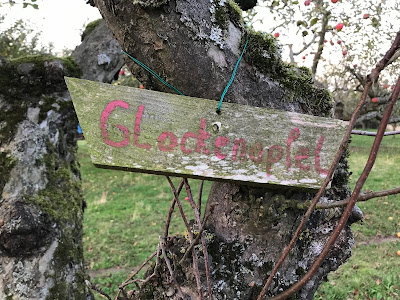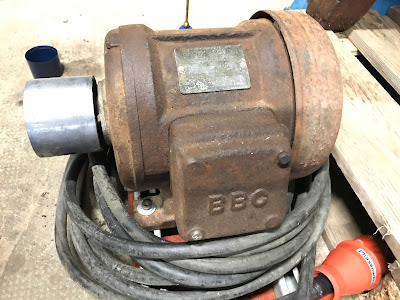We had to chew it over, but decided we'd go for it, if for nothing else, to ensure that the apple trees stayed as they are, and not be felled and the ground incorporated into the adjoining tillage. We've agreed a fair price and are currently waiting for the legal parts to make it official.
On our current plot, we have the following apple varieties:
- Goldparmäne (Reine des reinettes / King of the Pippens)
- Cox Orange
- Belle de Boskoop (both the normal and red mutation)
- Klarapfel (White Transparent)
- Glockenapfel
- Jonathan
- A couple others we do not know yet.
The new plot has all of the above, other than Jonathan, plus the following, that we know of:
- Neckartaler (possibly also called Rheinischer Winterrambur)
- Brettacher
- Rubinette (one of the few "modern" varieties there)
- Plus others unknown right now
The new plot has 54 trees (apple and pear), and our existing plot 30, with gaps across the two plots that leave generous space for another 20 new trees, which we will purchase for planting early in 2018. We've been researching German heritage apple varieties, of which there are a great many types, but also trying to make selections that would also be good for cider, in the Irish or British sense, rather than German.
So far, our list includes the following:
- Börtlinger Weinapfel
- Gravensteiner
- Hauxapfel
- Öhringer Blutstreifling
- Rheinischer Bohnapfel
- Schöner von Nordhausen
- Zuccalmaglios Renette
We'll be adding some pear, cherry and plum trees to that list also, as the cherry plums behind our house are very old, and we'd like to ensure a supply in years to come.
I'd like to order some classic British cider apples from the UK. It's difficult to find suppliers that will ship to Germany, despite getting tips via Twitter from those in the know, and it seems that Orange Pippin Fruit Trees is one of the few that easily ship to mainland Europe, albeit with a limited selection of true cider apple varieties. So far, I think I'd like to order the following as half-standards:
Let's see where we end up.
I'd like to order some classic British cider apples from the UK. It's difficult to find suppliers that will ship to Germany, despite getting tips via Twitter from those in the know, and it seems that Orange Pippin Fruit Trees is one of the few that easily ship to mainland Europe, albeit with a limited selection of true cider apple varieties. So far, I think I'd like to order the following as half-standards:
- Dabinett
- Harry Master's Jersey
- Ashmead's Kernel (as it sounds tasty)






























































